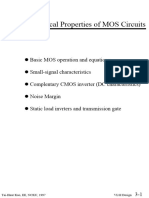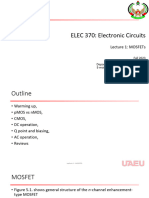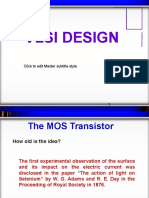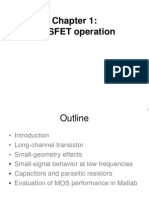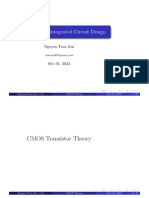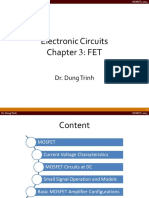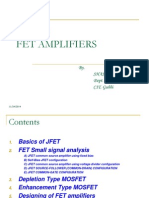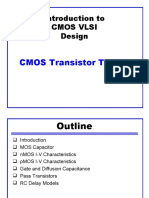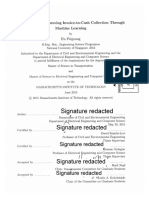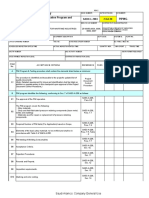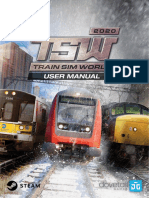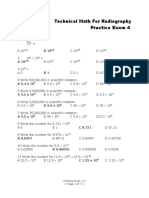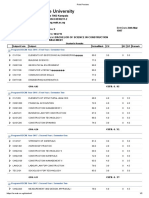100% found this document useful (1 vote)
33 views45 pagesCMOS Lecture2-2 Small Signal Model
This document covers the basic physics of MOS devices, including their I/V characteristics, small signal models, and capacitance. It discusses the transconductance and small signal output resistance of MOSFETs, as well as comparisons with bipolar junction transistors. Additionally, it includes practical examples and exercises related to CMOS analog integrated circuits.
Uploaded by
sakannnnnna9527Copyright
© © All Rights Reserved
We take content rights seriously. If you suspect this is your content, claim it here.
Available Formats
Download as PDF, TXT or read online on Scribd
100% found this document useful (1 vote)
33 views45 pagesCMOS Lecture2-2 Small Signal Model
This document covers the basic physics of MOS devices, including their I/V characteristics, small signal models, and capacitance. It discusses the transconductance and small signal output resistance of MOSFETs, as well as comparisons with bipolar junction transistors. Additionally, it includes practical examples and exercises related to CMOS analog integrated circuits.
Uploaded by
sakannnnnna9527Copyright
© © All Rights Reserved
We take content rights seriously. If you suspect this is your content, claim it here.
Available Formats
Download as PDF, TXT or read online on Scribd
/ 45






